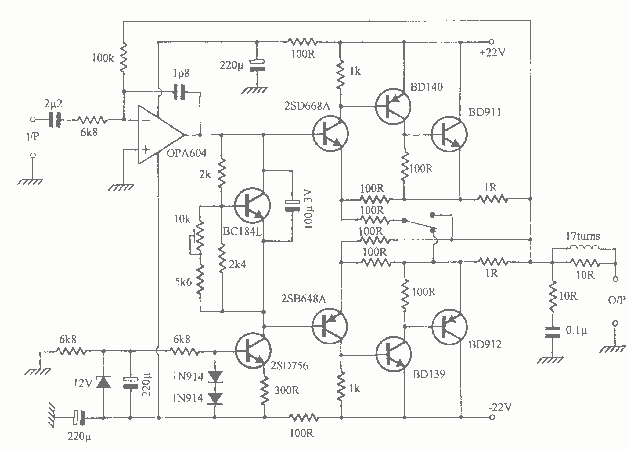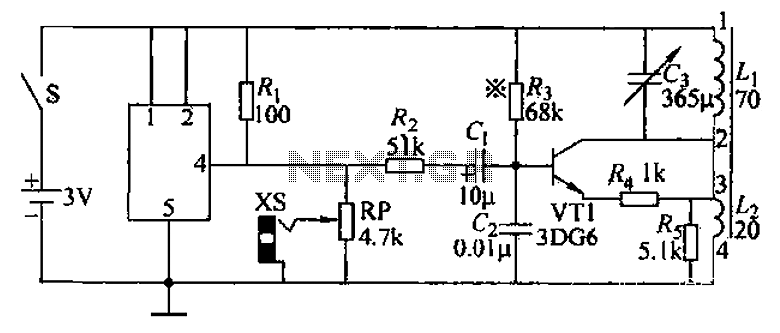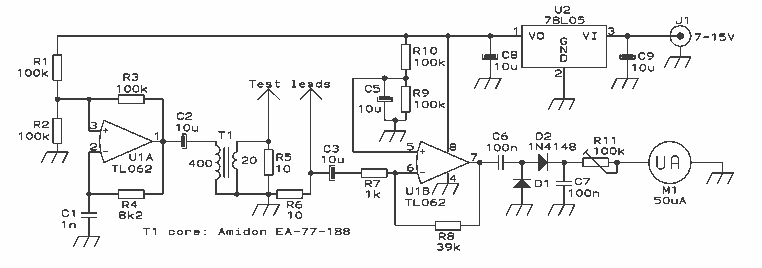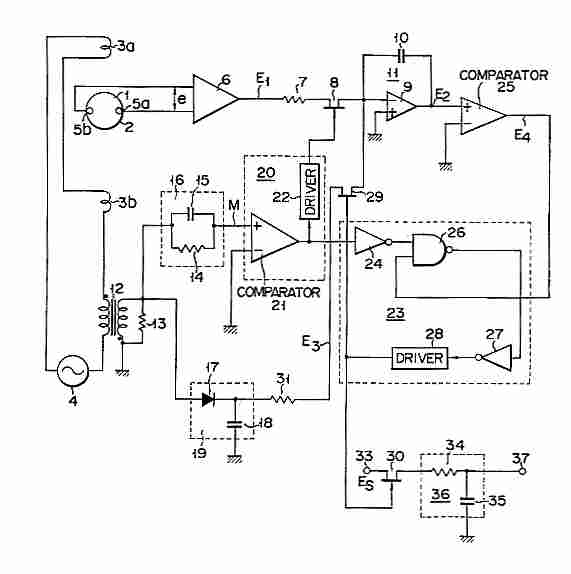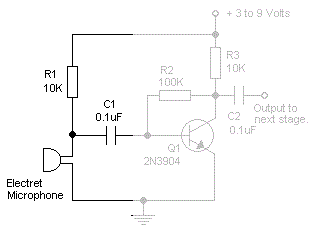
Audio Level Meter
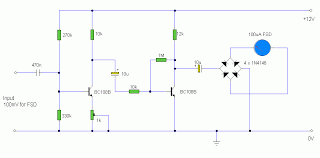
This audio meter can be monitored using a small panel meter with a circuit constructed from discrete components. The audio level meter circuit exhibits a flat frequency response ranging from approximately 20Hz to over 50kHz. The input sensitivity is set at 100mV for full-scale deflection on a 100µA meter. The design incorporates two common emitter amplifiers, with the first stage featuring a preset resistor that can be adjusted for full-scale deflection (FSD). The final stage is biased to operate at roughly half the supply voltage to maximize AC voltage swing. Audio frequencies are transmitted through a 10µF DC blocking capacitor, while a full-wave bridge rectifier converts the signal into a varying DC voltage.
The audio level meter circuit is designed for precise monitoring of audio signals across a wide frequency range, making it suitable for various applications in audio engineering and sound system diagnostics. The use of discrete components allows for flexibility in design and adaptability to specific requirements.
The first stage of the circuit, utilizing a common emitter amplifier configuration, serves to amplify the incoming audio signal. The presence of a preset resistor in this stage enables fine-tuning of the gain, allowing the user to set the meter's sensitivity to the desired level. This adjustment is crucial for achieving accurate readings, especially in environments where audio levels may fluctuate significantly.
The second common emitter amplifier stage further amplifies the signal while ensuring that the output is biased to operate at approximately half the supply voltage. This biasing technique is essential for maximizing the AC voltage swing, thereby allowing the meter to respond effectively to the variations in audio signal levels without distortion.
The inclusion of a 10µF DC blocking capacitor is vital for preventing DC offset from affecting the measurement. This capacitor allows only the AC components of the audio signal to pass through, ensuring that the rectification process accurately reflects the amplitude of the audio signal. The full-wave bridge rectifier then converts this AC signal into a varying DC voltage, which can be easily read by the panel meter.
Overall, this audio level meter circuit is a robust solution for monitoring audio levels with high fidelity and precision, making it an invaluable tool for audio professionals and enthusiasts alike.This is audio meter that can be monitored using a small panel meter with this circuit built from discrete components. The audio level meter circuit has a flat frequency response from about 20Hz to well over 50Khz. Input sensitivity is 100mV for a full scale deflection on a 100uA meter. Built on two common emitter amplifiers, the first stage has a preset resistor which may be adjusted for a FSD. The last stage is biased to operate at roughly half the supply voltage for maximum ac voltage swing. Audio frequencies are passed through the 10u dc blocking capacitor and the full wave bridge rectifier converts the signal to a varying dc voltage. 🔗 External reference
The audio level meter circuit is designed for precise monitoring of audio signals across a wide frequency range, making it suitable for various applications in audio engineering and sound system diagnostics. The use of discrete components allows for flexibility in design and adaptability to specific requirements.
The first stage of the circuit, utilizing a common emitter amplifier configuration, serves to amplify the incoming audio signal. The presence of a preset resistor in this stage enables fine-tuning of the gain, allowing the user to set the meter's sensitivity to the desired level. This adjustment is crucial for achieving accurate readings, especially in environments where audio levels may fluctuate significantly.
The second common emitter amplifier stage further amplifies the signal while ensuring that the output is biased to operate at approximately half the supply voltage. This biasing technique is essential for maximizing the AC voltage swing, thereby allowing the meter to respond effectively to the variations in audio signal levels without distortion.
The inclusion of a 10µF DC blocking capacitor is vital for preventing DC offset from affecting the measurement. This capacitor allows only the AC components of the audio signal to pass through, ensuring that the rectification process accurately reflects the amplitude of the audio signal. The full-wave bridge rectifier then converts this AC signal into a varying DC voltage, which can be easily read by the panel meter.
Overall, this audio level meter circuit is a robust solution for monitoring audio levels with high fidelity and precision, making it an invaluable tool for audio professionals and enthusiasts alike.This is audio meter that can be monitored using a small panel meter with this circuit built from discrete components. The audio level meter circuit has a flat frequency response from about 20Hz to well over 50Khz. Input sensitivity is 100mV for a full scale deflection on a 100uA meter. Built on two common emitter amplifiers, the first stage has a preset resistor which may be adjusted for a FSD. The last stage is biased to operate at roughly half the supply voltage for maximum ac voltage swing. Audio frequencies are passed through the 10u dc blocking capacitor and the full wave bridge rectifier converts the signal to a varying dc voltage. 🔗 External reference
